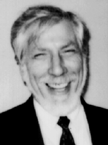What Have You Done for Me Lately?
Irving Lerch, APS Director of International Scientific Affairs

Over the past few years, perhaps in response to the faltering public support for science, a great deal of soul-searching has taken place as various panels have reviewed the status and value of the international scientific unions and the whole panoply of domestic and foreign organizations which comprise the global scientific enterprise. And in these days of budgetary pain and uncertainty, it's easy to sniff waste and inefficiency, and to conclude that our institutions have failed us. So, disintermediation is in and soft-minded accommodation is out. To use the jargon of our era, it's time to hang tough and play a zero-sum game.
Consider the opening paragraph of a report on a meeting on international cooperation on research in science, engineering and medicine, held in Bellagio, Italy in the fall of 1995, which commented, "The institutions designed to serve global science since the end of World War II are not keeping pace with the changes sweeping science and technology." In short, everyone is quite sure that our institutional mechanisms for international science are inadequate, but incremental change and not revolution is preferred.
In a review of the International Union of Pure and Applied Physics (IUPAP) a few years ago, the APS Executive Board concluded that few physicists knew anything about IUPAP, its purpose, or its value. A minority of physicists were aware that IUPAP sponsorship for conferences was essential if they were to use grant funds to attend. Some were aware that ICSU provisions for the free circulation of scientists were important to open conferences to attendees whose political origins would other bar them. And a very tiny group actually participated in the commissions of the Union. One wag suggested that this ignorance might be a good thing, since it was proof that IUPAP was not disruptive and may actually be contributing in some quiet way to the workings of international physics.
But doing no harm is no longer sufficient justification for spending money. The Bellagio panel generated a long list of generic ills broadly applied to many different kinds of international organizations: deficiencies in governance and staffing, narrow participation and focus, lack of resources, institutional rigidity and inefficiency. For example, the panel noted that, "Most institutions ... focus their efforts on university and government scientific capacity. As an economic sector, the private sector has not been recognized as a critical player in global science and rarely has a seat at the collaborative table."
Only in the past few years has the APS itself acknowledged such deficiencies and sought to correct them. But APS is a membership organization whose validity and viability derives from its grass roots. This is not true of the international scientific unions, whose rigid structure and glacial pace of doing business makes it difficult to institute new programs and organizational change. Yet for three generations, when the world was cemented into the post-War political order, this fixity was seen as a virture by many.
What other structures are open to us? The U.S. has increasingly turned to binational foundations to promote scientific collaborations. Establishments such as the U.S.-Korea Science and Technology Forum and the German-American Academic Council Foundation were created at the highest political level and then launched as private initiatives. Because of their lofty origins, they readily promote collaborations across institutional and disciplinary divisions, bringing together a broad collection of government, industrial, policy, technical and administrative experts. Such fora are difficult to organize on a multinational scale, In fact, experience shows that as the international scope broadens, the depth of outcome becomes more shallow.
Both the APS and the Korean Physical Society are sponsors of the U.S.-Korea forum. The membership society is an engine which can revitalize the international physics enterprise. As grass-roots organizations charged with serving the needs of their members, such societies are most sensitive to the prevailing winds which alter the course of science. This sense of change coupled with a firm commitment to science are the essential ingredients for all the organizations in the global physics enterprise.
IUPAP, on the other hand, is insulated from the societies by the national academies and research councils of its members. While the APS has statutory positions on the U.S. Liaison Committee (USLC) for IUPAP, it must act through the National Research Council's Board on Physics and Astronomy in its dealings with the Union. Nonetheless, the APS and other participating societies have moved to invigorate the USLC by taking a more active role in its deliberations. In return, the IUPAP Executive Committee is seeking tighter connections to national and regional societies.
To explore the growing list of critcal issues confronting the international scientific community, APS President Allan Bromley, Past President Robert Schrieffer, and President-Elect Andrew Sessler have called for a small consultative meeting this October of the largest membership societies (Japan, Germany, United Kingdom, China, and the U.S.), as well as the five regional societies (Europe, Latin America, Asia-Pacific, Africa and the Russian Federation). While the focus of the meeting will shift among specific issues - such as electronic publishing, education, science policy, and capacity building - the underlying question will be how the international community can best organize itself to confront these and future concerns.
We will soon confront the issue of whether to work for change from within or to throw over the existing order and start anew. What we eventually decide could resonate for another three generations, and it would be wise for all of us to be heard.
©1995 - 2024, AMERICAN PHYSICAL SOCIETY
APS encourages the redistribution of the materials included in this newspaper provided that attribution to the source is noted and the materials are not truncated or changed.
June 1997 (Volume 6, Number 6)
Articles in this Issue

